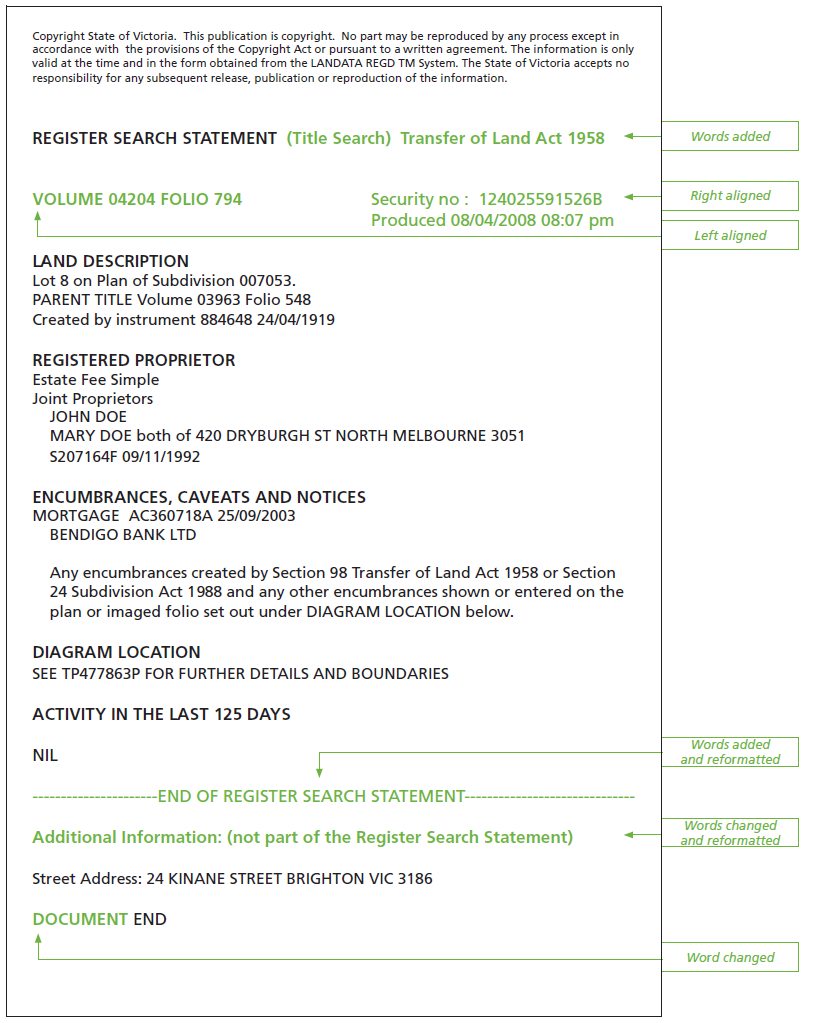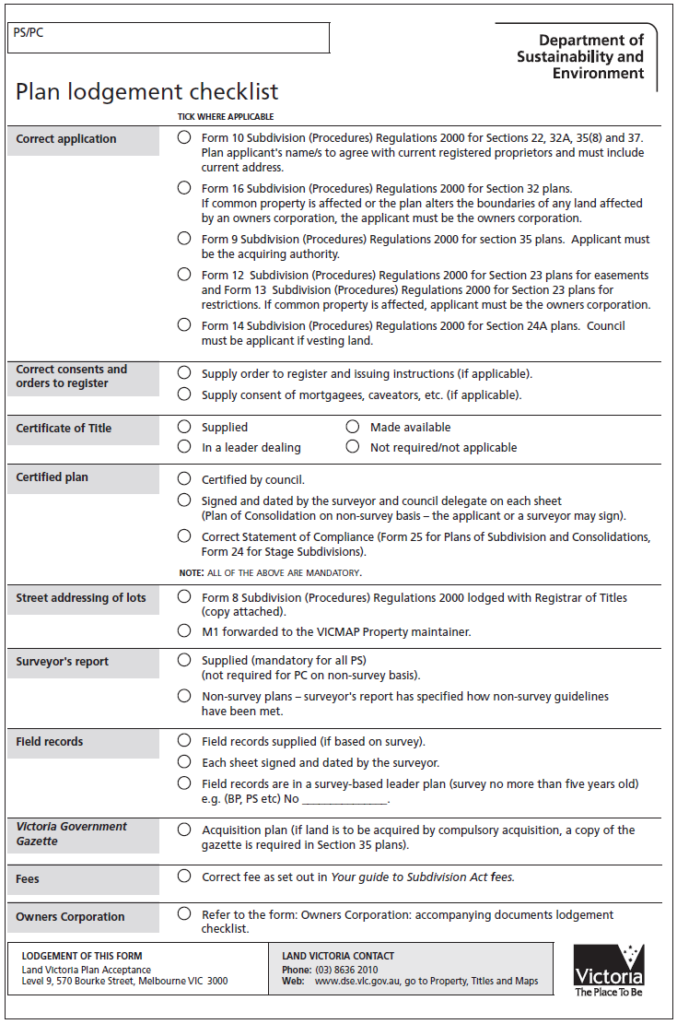// Customer Information Bulletin
Customer Information Bulletin #116 – Feb 2009
Plan requirements reminder
From 1 March 2009, plans will only be accepted for lodgement at Land Victoria if:
- accompanied by a Statement of Compliance (where the statement is required for registration); and
- street address information has been provided with the plan of subdivision or consolidation, either prior to lodging or at the same time as lodging the plan. Street address information can be provided using either the Form 8 process of the plan.
Street address information can be provided using either the Form 8 process of the Subdivision (Procedures) Regulations 2000, or the Vicmap update process known as M1, where details are forwarded to the Vicmap Property maintainer.
Accurate and timely street addressing is required for despatching emergency vehicles and effective title searching. Land Victoria is currently working with councils to achieve a high level of compliance and minimise issues at the time plans are lodged.
Lodging parties must also ensure that all plans are accompanied by a completed form
– Plan lodgement checklist (see below).
Plan lodgement checklists
From 1 March 2009, all lodging parties must ensure that plans delivered to the plan acceptance area of Land Victoria are accompanied by a completed form – Plan lodgement checklist and, where applicable, an Owners Corporation: accompanying documents lodgement checklist. These checklists are available online at www.dse.vic.gov.au/property – go to Property, Titles and Maps>Land Titles>Forms, Guides and Fees.
Examples of the checklists are on pages 3 and 4.
General reminders when preparing caveats
There can only be one claim per caveat.
A registered proprietor is only able to caveat in certain limited circumstances, most commonly when the (duplicate) Certificate of Title is lost or stolen, or when the registered proprietor fears that an improper or fraudulent dealing is about to take place or has taken place.
An administrator’s or liquidator’s appointment does not represent a caveatable interest. This is because an administrator or liquidator becomes an agent of the company that is already the registered proprietor of the estate or interest. The property does not vest in the administrator or liquidator. However, where appropriate, the administrator or liquidator may caveat in the name of the company in administration or liquidation on the basis that they have been appointed and, as they do not have control of the Certificate of Title, they wish to prevent any inappropriate dealings (see above).
A number of situations do not give rise to an estate or interest in land in their own
right. Examples include:
- a debt, even a judgement debt
- a consent to caveat
- being a de facto partner of a registered proprietor.
In view of Sections 53, 54 and 55 of the Property Law Act 1958, a verbal agreement without something more does not give rise to a caveatable interest in land.
Changes to Register Search Statement
Minor changes to the Register Search Statement were implemented on 23 January 2009. They are highlighted in green below.



Return to the Customer Information Bulletin Index
Disclaimer
The Customer Information Bulletins (CIB) Search Tool (“Tool”) is provided by SERV to assist users in locating Customer Information Bulletins (CIBs) issued by Land Use Victoria (https://www.land.vic.gov.au/land-registration). This Tool provides a list of available CIBs based on search terms entered by users, displaying results in order from newest to oldest.
By using this Tool, users agree to these terms and acknowledge that SERV makes no warranties regarding the accuracy, completeness, or timeliness of the search results. Users accept responsibility for verifying the information obtained through the Tool against the original sources, including the official Customer Information Bulletins found here (https://www.land.vic.gov.au/land-registration) and any other requirements issued by the Registrar of Titles from time to time in accordance with the Transfer of Land Act 1958.